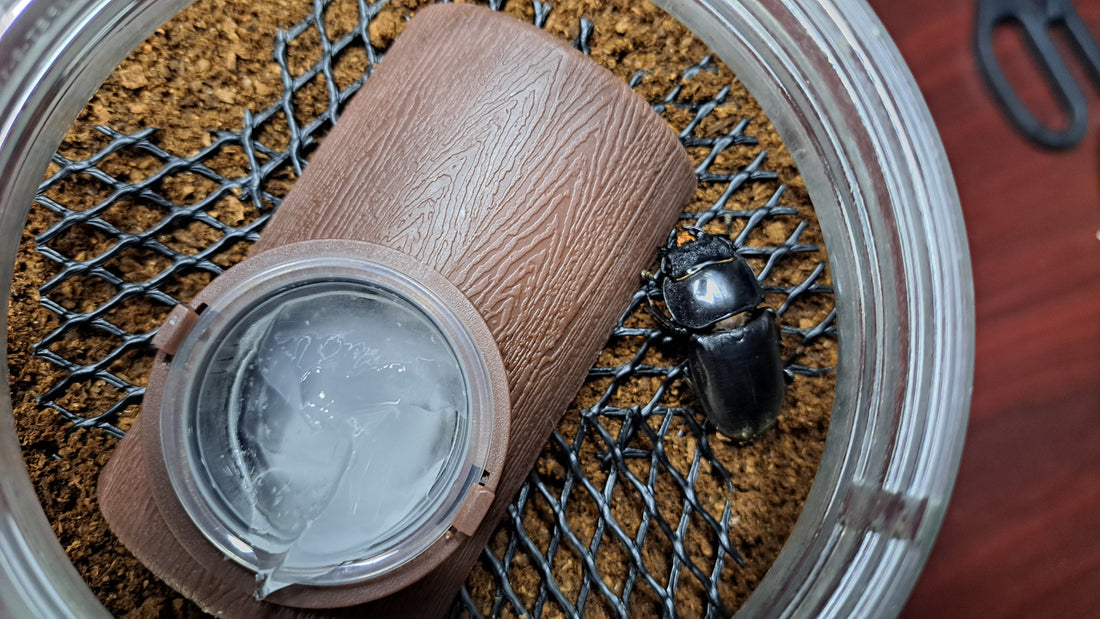For species that lay eggs directly in the substrate, the setup is pretty simple and straightforward.

1. Get a container ready for the setup.
Minimum case size will vary depending on the species.
I usually go with 4-gallon containers, but for testing purposes, I used a 105 oz container this time.


2. Fill about 70% of the container with substrate and compress it tightly.
Then, add another 1 to 2 inches of loose substrate on top of the compacted layer.


3. Add beetle jelly and anti-flip support
Place jellies for your female to keep her well-fed during egg-laying.
Even if she doesn’t eat, replace jellies weekly to avoid mold.
Also, adding mesh or bark helps prevent her from flipping over.


4. Add the female.
The ideal temperature range for egg-laying is generally 73–80°F (23–27°C).
Since there is a possibility of unfertilized eggs, it is appropriate to check whether eggs have been laid every 1-2 months.
However, once the confirmation process has been completed, the settings must be set again from the beginning.

1. Get a container ready for the setup.
Minimum case size will vary depending on the species.
I usually go with 4-gallon containers, but for testing purposes, I used a 105 oz container this time.


2. Fill about 70% of the container with substrate and compress it tightly.
Then, add another 1 to 2 inches of loose substrate on top of the compacted layer.


3. Add beetle jelly and anti-flip support
Place jellies for your female to keep her well-fed during egg-laying.
Even if she doesn’t eat, replace jellies weekly to avoid mold.
Also, adding mesh or bark helps prevent her from flipping over.


4. Add the female.
The ideal temperature range for egg-laying is generally 73–80°F (23–27°C).
Since there is a possibility of unfertilized eggs, it is appropriate to check whether eggs have been laid every 1-2 months.
However, once the confirmation process has been completed, the settings must be set again from the beginning.
